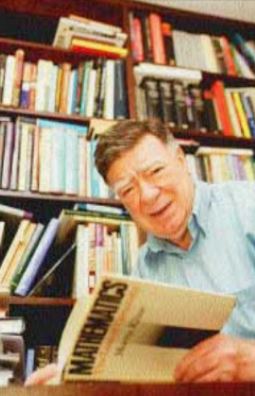
Any internet search for ‘ethnomathematics’ will show that Brazillian, Ubiratan D’Ambrosio is widely considered the ‘father’ of Ethnomathematics. D’Ambrosio suggests that Ethnomathematics does not have a fixed definition, because both ETHNO and MATHEMATICS have broad definitions.
“…the art or technique of explaining, knowing and understanding diverse cultural contexts.” (Ambrosio, 1990)
His definition of Ethno relates to all things related to a particular cultural identity – such as clothing, language, jargon, values, beliefs, habits and physical traits. And Mathematics includes mathematical activities such as classifying, ordering, inferring and modelling. So much more than “just everyday stuff like shopping!”
D’Ambrosio believes that for teachers to effectively teach through Ethnomathematics, they need to recognise that Mathematics and culture are related – hence his terminology – Ethnomathematics is the relationship between culture and mathematics. However, like Mundine (2014), D’Ambrosio acknowledges that most teachers include tokenistic cultural content, which may relate to traditional cultures, but not to the lives of the children being taught. This is probably what I would have done, and why I was interested in figuring out HOW to incorporate culture into the classroom setting… Again, one cannot assume that all children of the same socio-cultural group are the same.
As suggested by Mundine (2014), the goal of school mathematics is to prepare students for a technologically changing modern world, and parents of those children want schools to prepare them in the best way possible. We should be teaching students to use mathematical strategies to be able to use emerging technologies for problem solving, and to share their reasoning, and justify their choices of strategy, or understanding.
Traditionally, there has only been ‘one way’ to do maths, and the teacher was the person to determine what that might look like. By acknowledging the personal culture of the child, we are able to demonstrate and encourage other students to value the diversity of the children in the classroom (and indeed, in society). Students should be allowed to use their existing knowledge, and cultural understandings to construct personally meaningful understandings. When students are able to construct knowledge in this way, rather than through rote learning, they are more easily able to retain the knowledge, explain their work, and use it in other contexts.
Often, school mathematics is called ‘Western Mathematics’, this does not accurately or overtly reflect the history of mathematics. Ethnomathematics enables students and families to see that mathematics is in fact something which was used to solve problems of the world, and creatively, well before Eurocentric schooling, began; and that MANY inventive, creative, intelligent and resourceful cultures were involved in the development of mathematics. Using the terminology ‘development’ further supports Mundine’s (2014) claim that maths and science changes over time – D’Ambrosio calls it a ‘compilation of progressive discoveries and inventions from cultures around the world during the course of history’.
D’Ambrosio suggests that students need to recognise the rich cultural (non-white) history of mathematics in order to foster their own self-worth, and mathematic capabilities. Further he suggests that in order for teachers to effectively illuminate their students with this knowledge, they first must embrace and improve their understanding of cultural contributions to the development of maths as we know it.
So far, all the readings seem to support each other. But what I’m still not sure about, is how? How do we incorporate this ‘culture’ without tokenistic inclusion, or further alienation or marginalisation of the students?
Maybe it lies in D’Ambrosio’s definition?
Or perhaps, it really is about modelling. Using real life problems to teach concepts. Connecting life to school. But who’s life? How do you decide which cultural aspects to include? Or to exclude? Like D’Ambrosio says – there’s a high chance that traditional culture is not relevant to the life of the children… Maybe it’s about choice? A number of options for how to involve the students in the learning – differentiation – different ways to get where we need to go…?
I think one of the most important points from the D’Ambrosio reading is that Ethnomathematics allows children to recognise that Mathematics continues to be used and adapted in different ways around the world, and that it is current, and ongoing – not just something removed from their particular reality and learned ‘for the future’.
References:
D’Ambrosio, U. (1990). Etnomatematica: Arte out tecnica de explicar e conhecer. Sao Paulo. Brazil: Editora tica. (Translated into English as Ethnomathematics: The art or technique of explaining and knowing by ISEm.)
D’Ambrosio, U. (2001). What Is Ethnomathematics, and How Can It Help Children in Schools? Teaching Children Mathematics, 7(6), 308.
Mundine, N. W. (2014). Teaching children Aboriginal kinship in maths does not add up. The Australian, (5 May, 2014). http://www.theaustralian.com.au/opinion/teaching-children-aboriginal-kinship-in-maths-does-not-add-up/story-e6frg6zo-1226906653349

Hi Leanne, your questions about How we incorporate … ? was something that I struggled with when researching this as I couldn’t find much about this, I did find that there were links to the history of maths and how cultures have influenced the study of maths over time (phythagoras, – Greek mathematician.). I felt reassured that I wasn’t the only one to struggle with this concept. your thoughts on today’s school maths was something that I concurred with as through my reading of the curriculum and other articles I found little implementation of cross cultural aspects in the subject of maths.
LikeLiked by 2 people